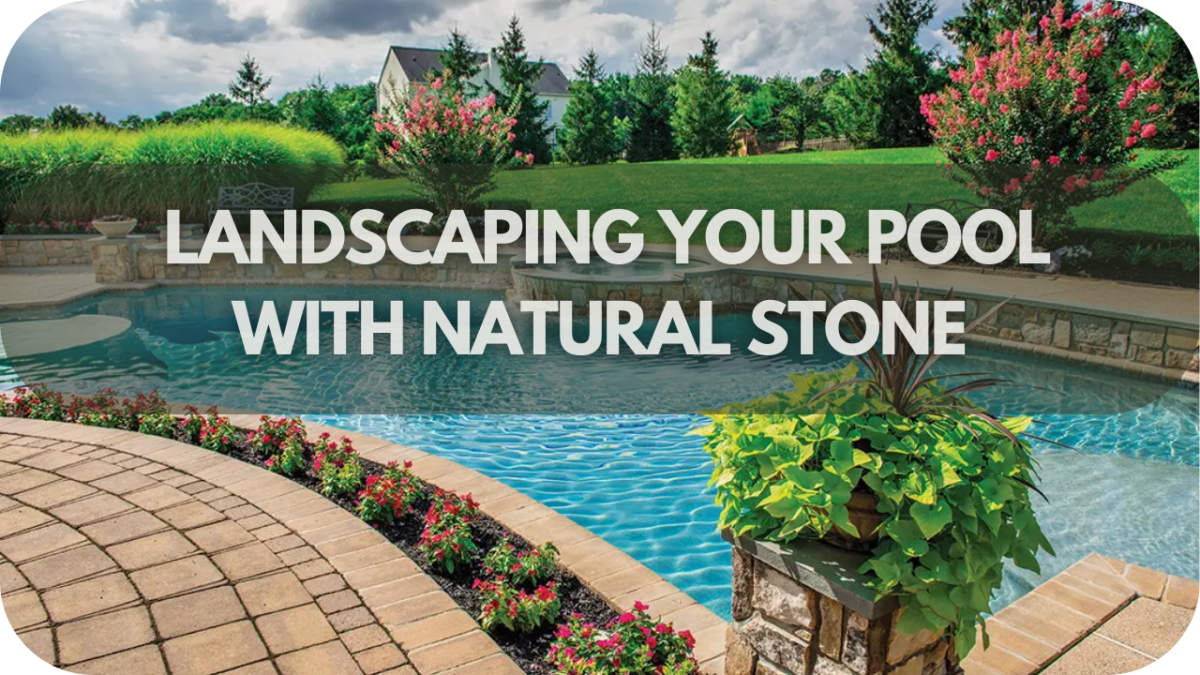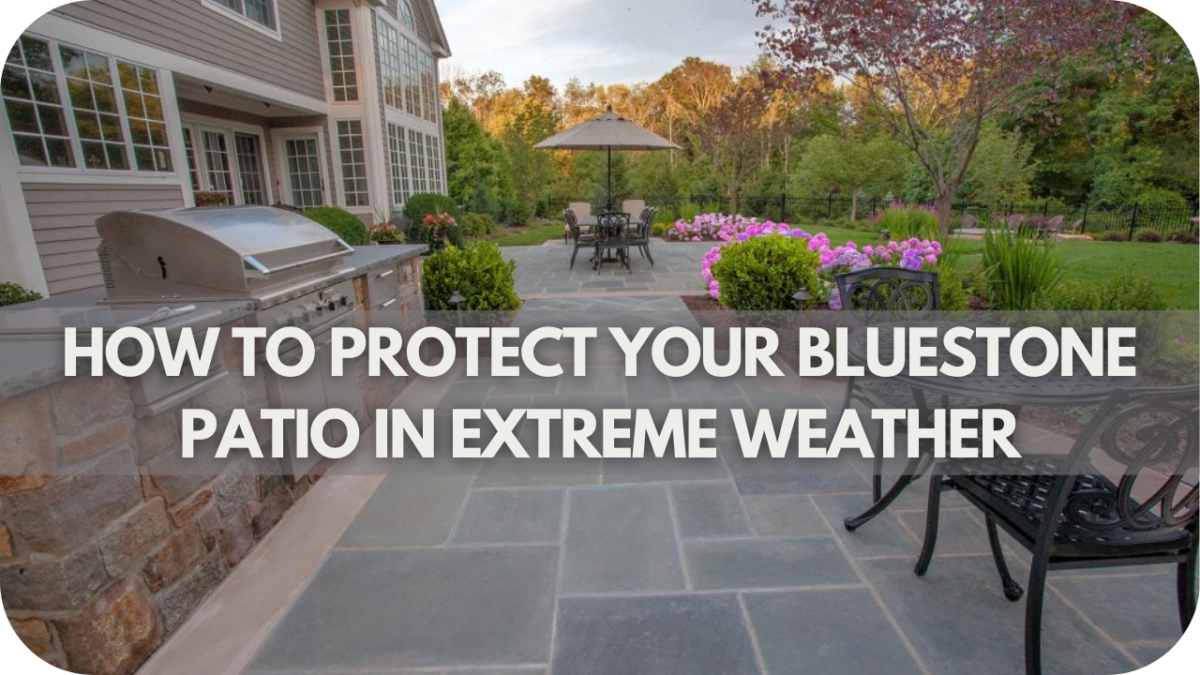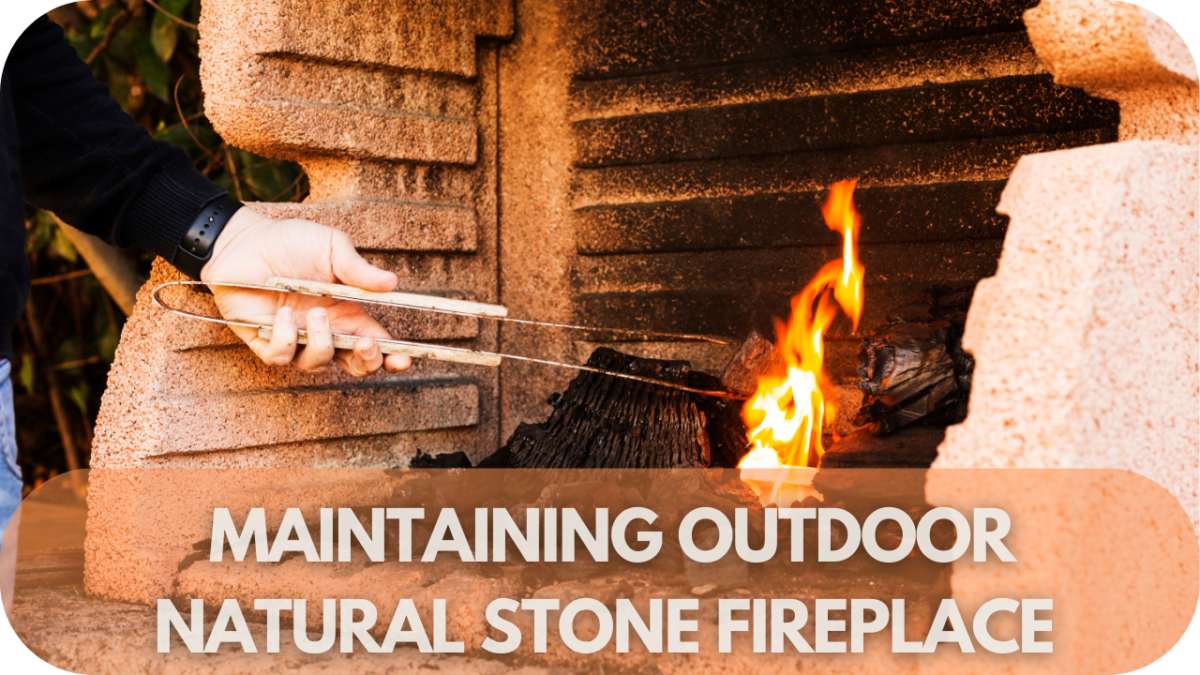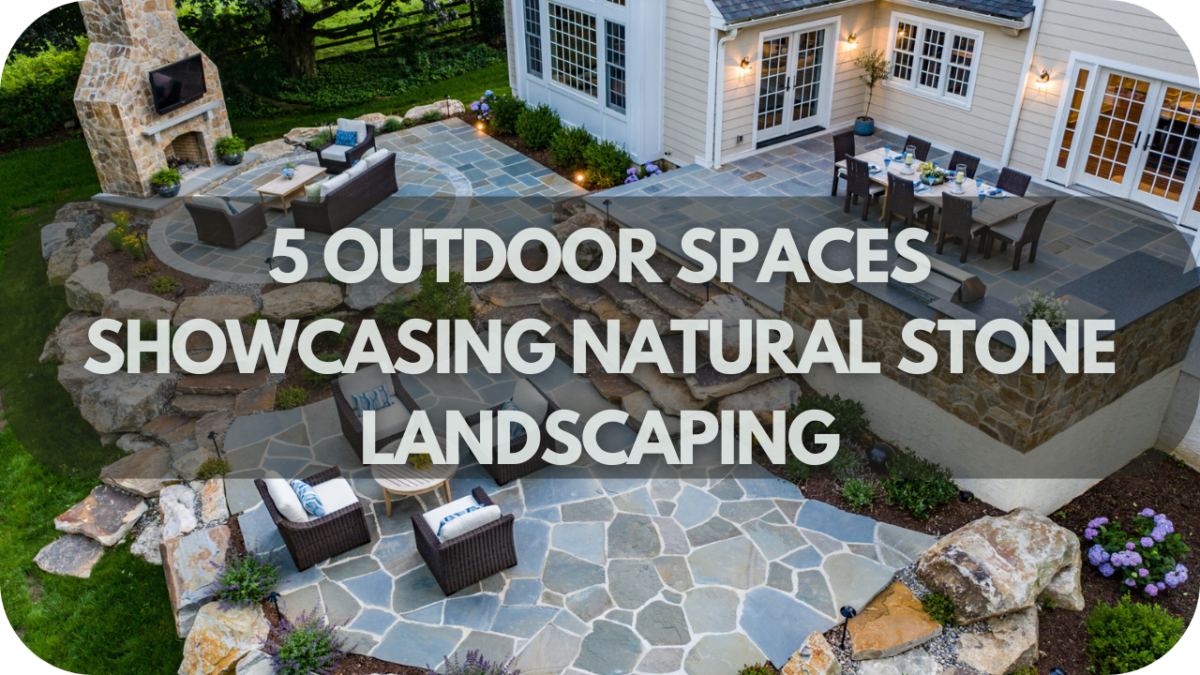5 Natural Stones to Use When Landscaping Around Your Pool
Landscaping around your pool can be tricky, especially when choosing materials that balance style with durability.
The wrong choice can lead to slippery surfaces, unbearable underfoot heat, and a landscape that doesn’t match your vision. This can make your pool area unsafe and less than inviting.
Fortunately, natural stones offer a stunning, practical solution. Here are four ideal options that enhance your pool’s aesthetic, provide heat control, and are long-lasting—perfect for creating a safe, stylish oasis right at home.
1. Travertine
Travertine is an ideal solution for pool landscaping, offering a perfect balance of elegance, functionality, and safety. Its naturally porous surface delivers a secure footing around the pool, enhancing safety in wet conditions. This quality sets it apart from alternatives like sandstone or bluestone.
One of the most attractive qualities of travertine is its ability to remain cool underfoot, even in scorching temperatures. This heat-resistant property makes it a comfortable option for poolside areas, unlike other stones that can become uncomfortably hot.
Travertine’s aesthetic appeal is undeniable. Available in various colours, from soft ivories to rich walnuts, it can seamlessly integrate with multiple design themes, adding a touch of luxury to any pool setting.
Additionally, travertine is versatile in its applications. It can be used for pool decking, pathways, steps, and coping, making it a comprehensive solution for your landscaping needs. When considering stones like limestone, which also offers elegance and coolness, travertine’s unique texture and colour options often give it the edge.
2. Limestone
Limestone is an exceptional choice for poolside landscaping, combining timeless elegance with practical benefits. Its smooth texture and consistent colouring create a sophisticated look, making it popular alongside stones like travertine, sandstone, and bluestone.
One of limestone’s standout features is its ability to stay cool underfoot, even on the hottest days. This property ensures comfort around your pool, similar to the benefits offered by travertine.
Available in various hues, including cream, white, and grey, limestone can complement a wide range of design aesthetics. Whether aiming for a classic or contemporary look, this stone provides versatility in colour and application. Its durability ensures that your poolside area will withstand the test of time and weather, maintaining its beauty and functionality.
Limestone is ideal for various poolside applications, such as coping, borders, terraces, and patios. Its elegant appearance and practical qualities make it a top contender over other natural stones. Limestone is an excellent choice for pool landscaping for those seeking a blend of beauty, comfort, and durability.
3. Granite
Granite is a top-tier choice for pool landscaping. One of its key features is its resistance to heat, scratches, and stains. This resilience ensures that your poolside area remains pristine and functional despite constant exposure to water, sunlight, and outdoor elements.
Aesthetically, granite offers a diverse palette of colours and patterns, ranging from subtle greys to vibrant reds and blues. This variety allows for creative and personalised poolside designs that complement other natural stones like sandstone and bluestone, creating a harmonious outdoor space.
Granite’s versatility extends to various applications, including pool decks, coping, and pathways. Its ability to withstand harsh weather conditions and heavy use without losing appeal makes it a preferred choice for those seeking both beauty and durability in their pool landscaping. Granite is an exceptional option for a pool area that balances strength with style.
4. Sandstone
Sandstone is a fantastic poolside landscaping option, offering natural beauty and strength.
Its warm, earthy look brings a rustic charm that stands out from more polished stones like travertine or limestone, creating a welcoming atmosphere around your pool. Sandstone’s versatility in texture and colour, with shades like beige, brown, red, and grey, ensures it can easily harmonise with any outdoor design.
Highly durable, sandstone withstands the demands of poolside conditions, from water and chemicals to fluctuating temperatures, making it ideal for high-traffic areas. Its robust nature provides long-lasting performance, ensuring your poolside remains attractive and functional.
Sandstone is also used for various purposes, including pool decking, pathways, retaining walls, and garden edging. It offers a cohesive and stylish look. For a blend of natural aesthetics and durability, sandstone is an exceptional choice for enhancing your pool landscape.
Durability and Beauty: Why Natural Stone is Ideal for Pools
Natural stone combines resilience with timeless beauty, making it the perfect choice for poolside landscaping. Designed to withstand the elements, stones like granite, travertine, and limestone can endure heavy foot traffic, fluctuating temperatures, and constant exposure to water and pool chemicals.
This durability means less frequent replacements and lower maintenance costs, providing exceptional long-term value. Aesthetically, natural stone offers unmatched elegance. Each piece has unique colour variations and textures, bringing organic warmth and character to the pool area.
Stones like travertine remain cool underfoot even on hot days, ensuring comfort around the pool in all seasons. Natural stones are available in various shapes and finishes for a cohesive look, allowing for seamless integration with surrounding outdoor features.
In addition to its practical and aesthetic benefits, natural stone also enhances property value. This premium material adds an upscale, luxurious touch to any home, appealing to future buyers.
Choosing the Right Stone for Your Pool
Choosing the perfect stone for your pool area can transform its look and feel, balancing aesthetics with functionality. Here are factors to consider when selecting poolside stone:
- Consider Climate: Stones like travertine or limestone are ideal for hotter climates as they stay cool underfoot, even in direct sunlight.
- Focus on Finish and Texture: A smooth finish with a slight texture adds traction without sacrificing aesthetics.
- Evaluate Maintenance Needs: For low maintenance, granite’s hardness and stain resistance make it durable in high-traffic areas. Stones like sandstone are beautiful but may require periodic sealing to resist moisture and pool chemicals.
- Think About Colour: Lighter tones like ivory or beige enhance the pool’s reflective qualities. Darker shades of granite offer a bold, dramatic contrast.
- Complement Your Home’s Style: Choose a stone that seamlessly complements your home’s design, creating a cohesive look from the indoors to the poolside.
- Plan Thoughtfully: With the right choice, your pool area can become a luxurious retreat, balancing beauty and function.
Installation Tips and Tricks
The difference between a lasting, beautiful stone installation and one that quickly shifts or cracks lies in the details. From laying the foundation to locking in those final stones, these essential tips and tricks ensure your poolside stonework is as durable as stunning.
- Prepare a Stable Base: Excavate the area to around 4-6 inches deep, and lay a compacted gravel foundation to ensure proper drainage and stability for the stones.
- Add Sand or Mortar Layer: Spread sand or mortar over the gravel to create a smooth, level surface that securely holds the stones in place.
- Lay Stones Strategically: Begin placing stones from one corner, moving outward with slight spacing between each stone to allow for natural expansion and avoid cracks.
- Tap Stones into Place: Gently tap each stone with a rubber mallet, ensuring it is level and securely set.
- Fill Joints with Polymeric Sand: Sweep polymeric sand into the joints; it hardens upon setting, locking the stones in place and helping to prevent weed growth.
- Seal for Protection: Apply a sealant to protect against pool chemicals and weather exposure, which enhances the colour and extends the life of the stones
Maintenance and Care
Keeping your poolside stonework in pristine condition requires regular care and mindful maintenance. With a few simple steps, you can protect your stones and keep them looking stunning season after season.
- Regular Cleaning: Sweep frequently to prevent dirt and debris from settling. For spot cleaning, use mild soap with water. For a deeper clean, use a gentle pressure wash—just avoid harsh chemicals that could damage the stone.
- Sealing for Protection: Apply a stone sealant every one to two years, especially for porous stones like sandstone and travertine. Sealing guards against moisture, pool chemicals, and UV exposure, helping to prevent stains and reduce water absorption.
- Prevent Weed Growth: Sweep polymeric sand between stones after sealing. This locks in the rocks and helps block weeds from sprouting up in the joints.
- Repair Cracks Promptly: Look for shifting or cracks in the stone. Addressing repairs quickly prevents further damage and maintains the structural integrity of your poolside area.
Poolside Designs with Paving
Poolside paving can transform an essential pool area into a refined retreat, balancing beauty with functionality. Begin by selecting durable paving stones like travertine, sandstone, or limestone.
These stones stay cool underfoot and handle moisture well, making them ideal for wet areas. Travertine’s soft, neutral tones provide a classic look that pairs well with various poolside styles, while limestone offers a sleek, modern aesthetic.
Consider the layout and design of your paving to enhance the pool’s visual appeal. Straight, linear patterns create a clean, minimalist look, while random arrangements with various stone sizes add texture and interest.
Framing the pool with a border of darker stones, like bluestone, can create a striking contrast that draws the eye to the water. For added luxury, incorporate inlaid lighting between pavers or around the pool edge, which brings a warm glow and enhances safety after sunset.
Finally, soft landscaping—such as low-profile plants or decorative gravel—surrounds the paving and adds natural beauty while framing the stonework. Thoughtful poolside paving creates a stylish, practical, inviting space for relaxation and outdoor entertaining.
Safety Considerations
Creating a safe poolside area goes beyond aesthetics—choosing suitable stones and installation methods can make all the difference. Here are essential safety tips to ensure your poolside stonework is as secure as it is beautiful:
- Ensure a Solid, Level Base: Install stones on a stable, compacted base to prevent uneven surfaces. This reduces tripping hazards and keeps the stonework secure over time.
- Secure Edging Along the Pool: Properly fixed edging keeps stones in place and prevents shifting, especially in high-traffic areas around the pool.
- Inspect for Cracks: Check stones periodically for any cracks or loosened areas, repairing them promptly to maintain a safe surface.
- Choose Heat-Reflective Stones for Comfort: Use lighter-coloured stones like travertine, which stay cooler under the sun, avoiding burns on bare feet during summer.
- Incorporate Lighting for Evening Safety: Add lighting along paths and edges to improve visibility around the pool after dark.
Long-term Benefits
1. Exceptional Durability. Stones like granite and limestone endure heavy use, harsh weather, and exposure to pool chemicals without fading or wearing down.
2. Cost-effective Longevity. Natural stone requires fewer repairs or replacements over time, making it an intelligent investment for outdoor spaces.
3. Low Maintenance. When adequately sealed, natural stones require minimal upkeep, reducing the need for intensive cleaning or frequent maintenance.
4. Comfortable Underfoot. Stones like travertine remain cool in direct sunlight, providing comfort around the pool and resisting cracking from temperature changes.
5. Enhanced Property Value. Natural stone’s timeless appearance and lasting quality add appeal for potential buyers, making it a valuable asset for resale.
6. Style and Function. Choosing natural stone elevates your pool area with an enduring, low-maintenance feature that continues to provide beauty, resilience, and value.
Conclusion
Choosing a suitable natural stone for your pool area enhances its beauty and functionality. Whether you prioritise cool surfaces or durability, each stone offers unique benefits tailored to outdoor living.
Ready to transform your poolside with elegance and durability? Explore your options and create a lasting, stylish retreat with the perfect stone selection.






